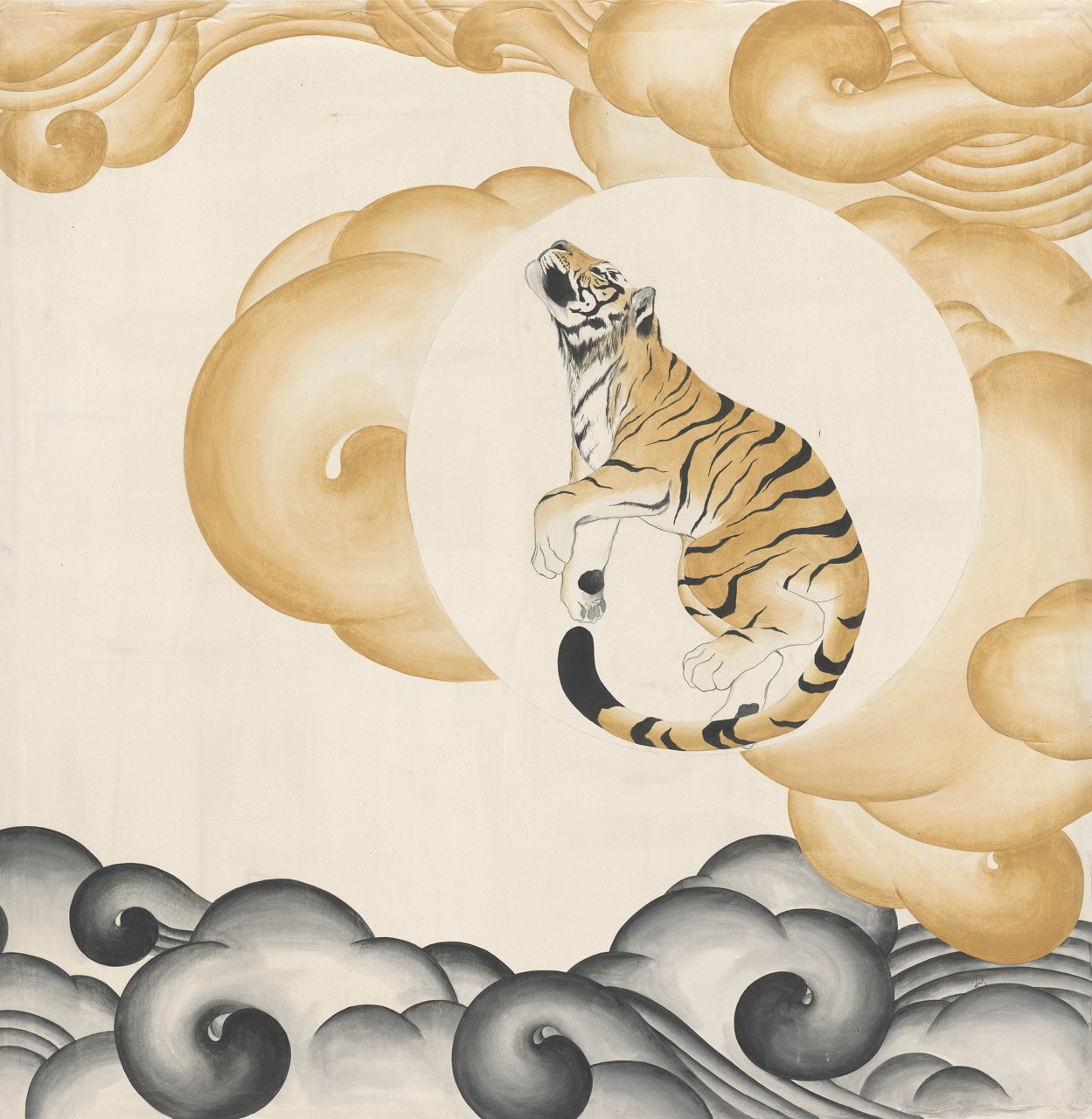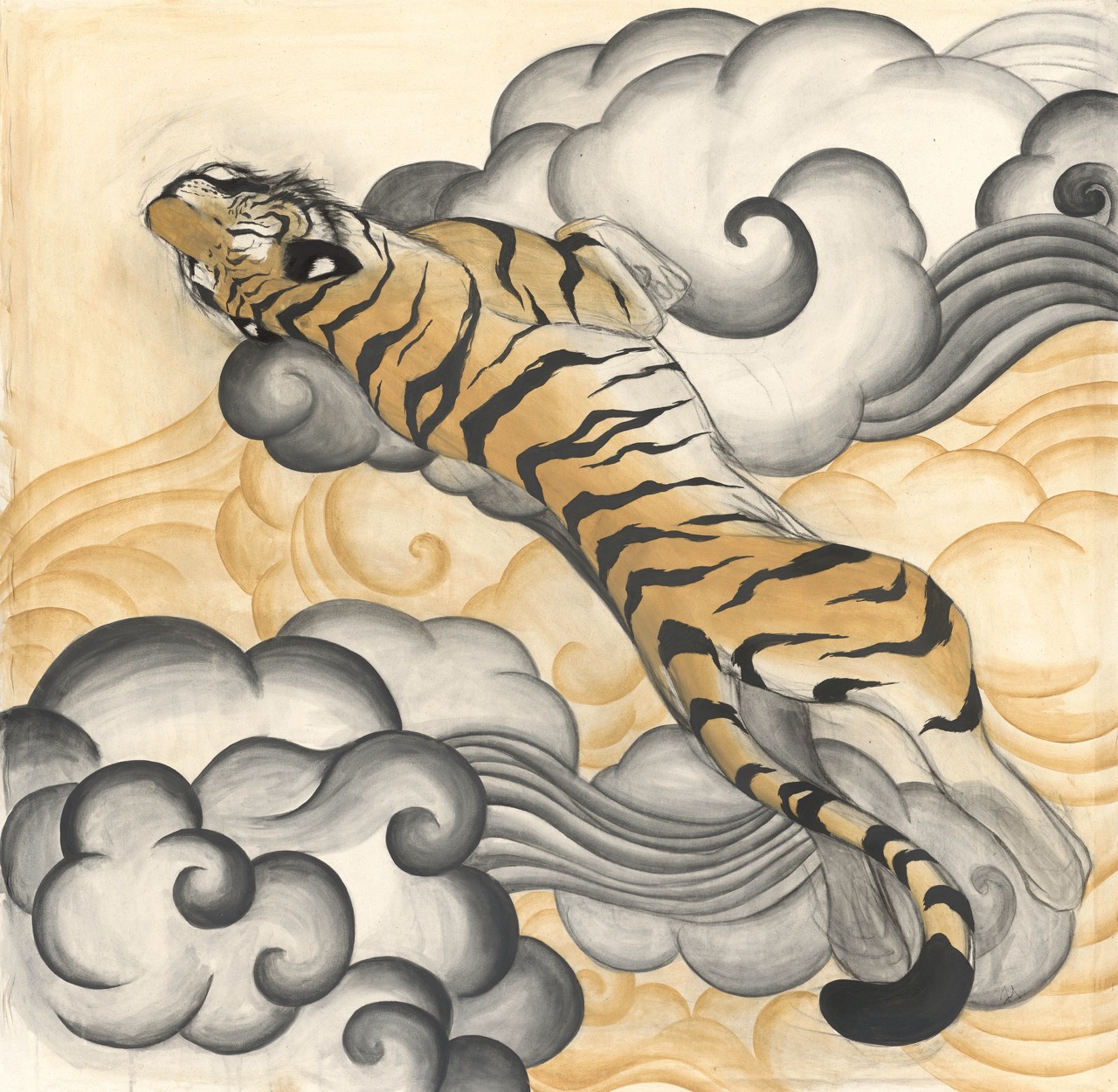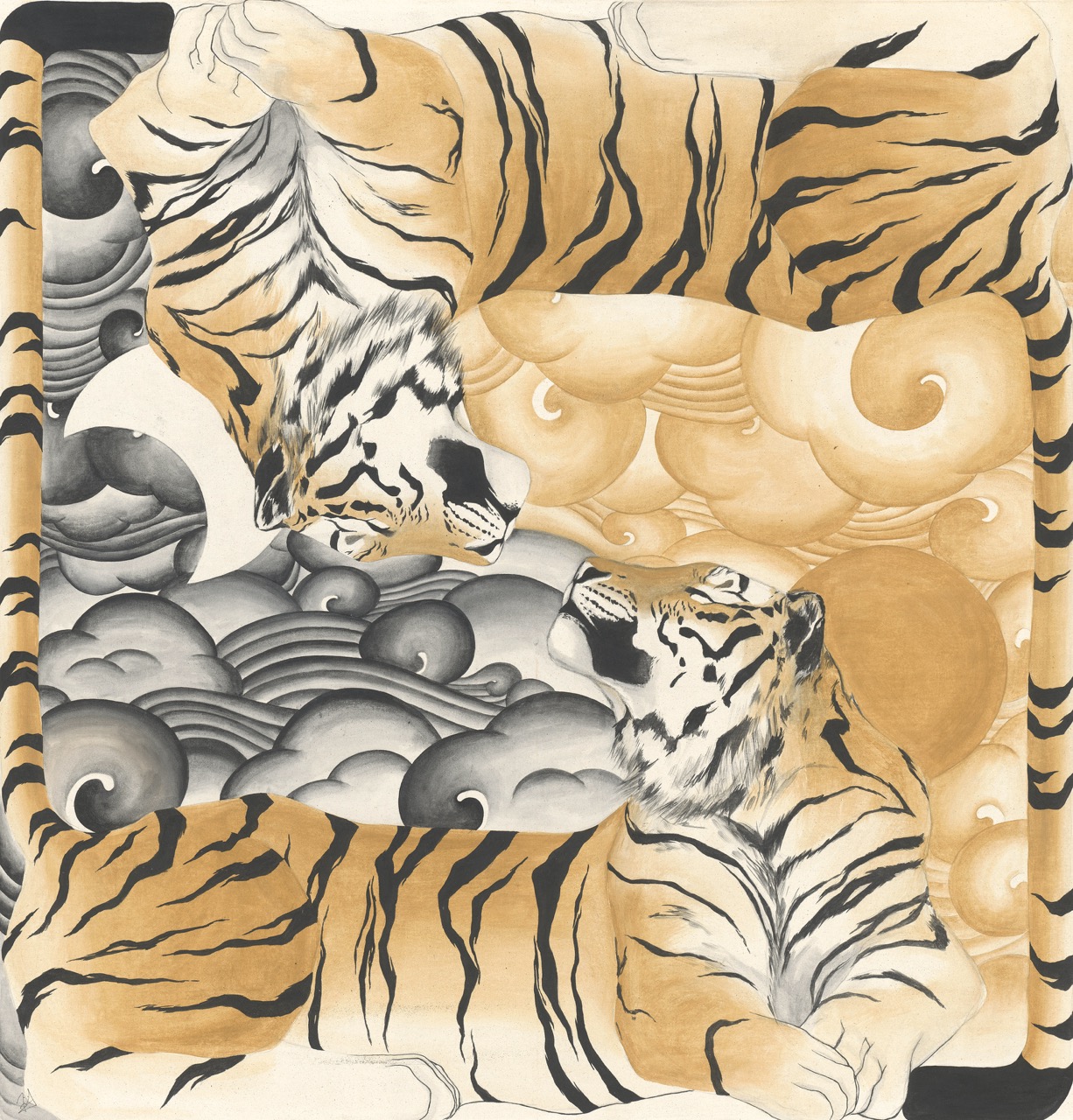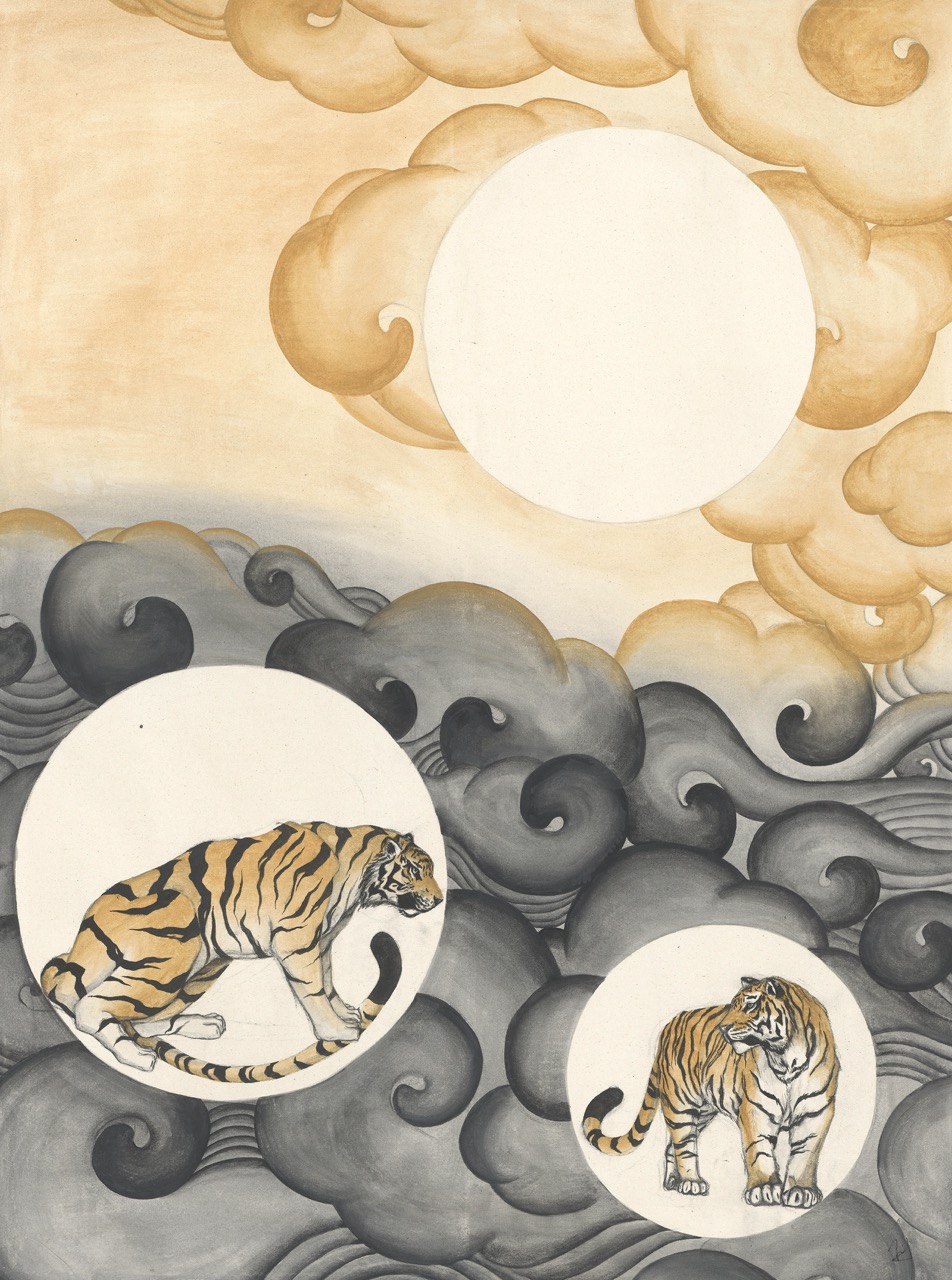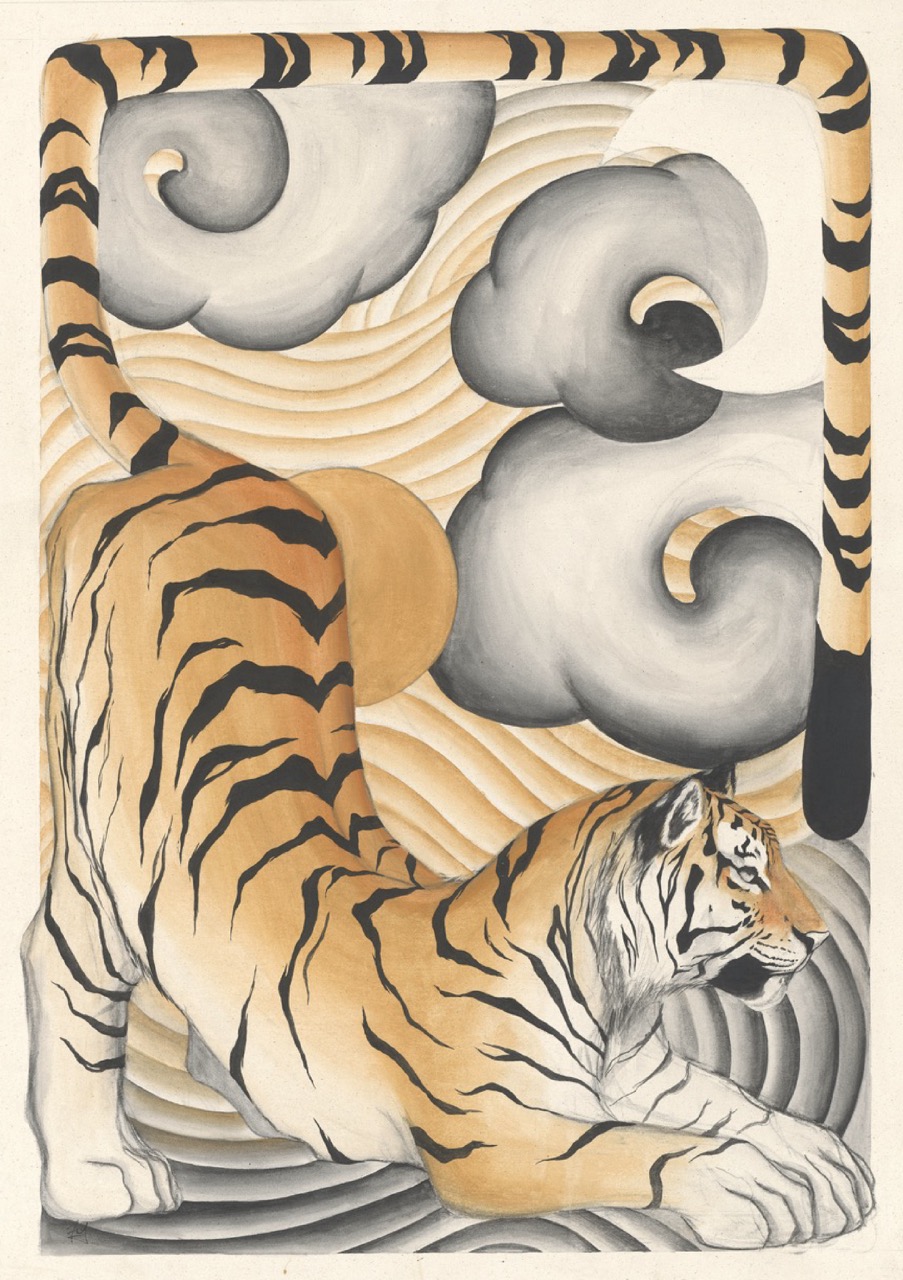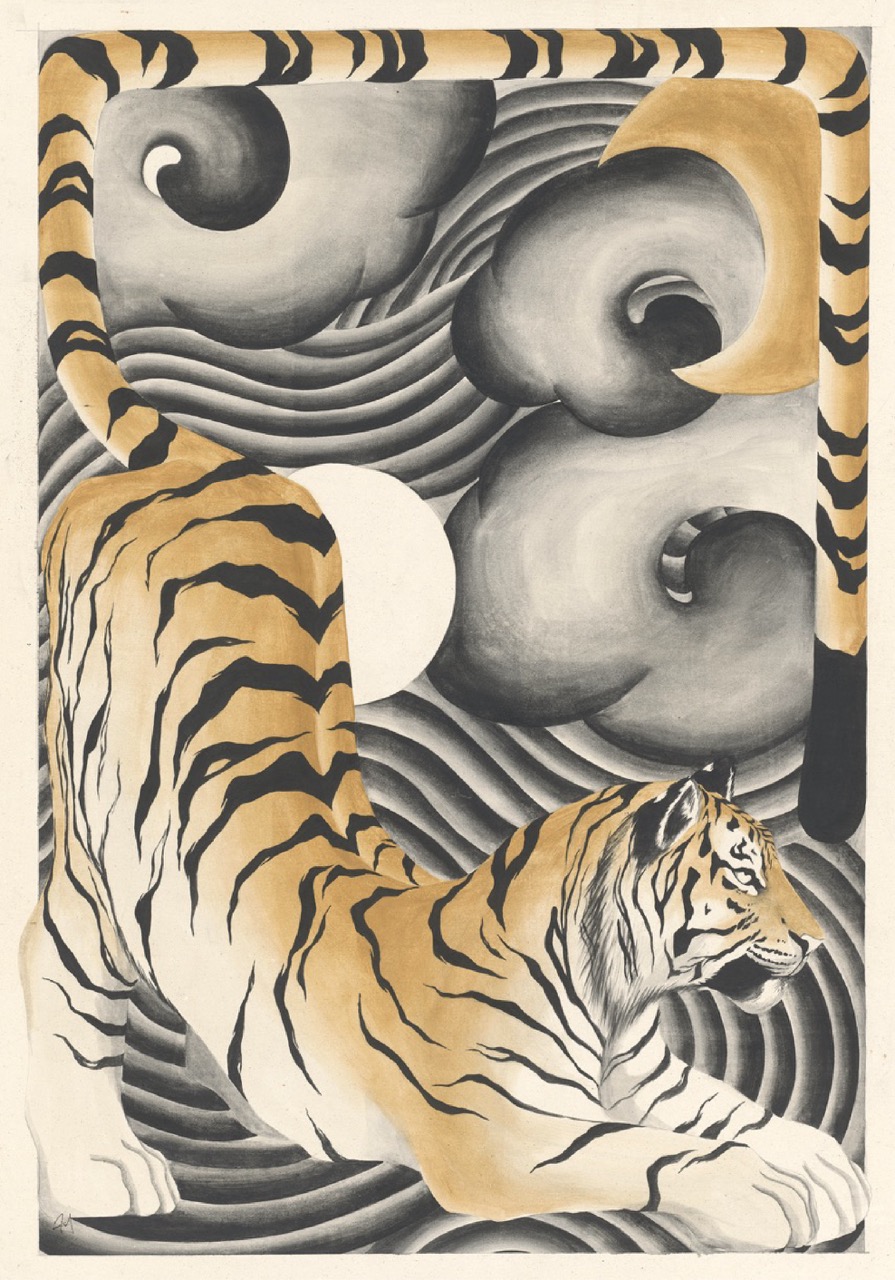Zimbiri
Bhutan
Zimbiri was born in Thimphu, Bhutan. She went to college abroad and graduated from Wheaton College in Massachusetts, USA, with a double major in Economics and Fine Arts. She is the first female to have ever held a solo exhibition in Bhutan. Zimbiri’s art tells the stories of Bhutan through various facets of her art practice, namely her choice of medium and motif.
She exclusively uses local materials from Bhutan, pigmented earth “saa-tshen” and traditionally prepared canvas “rhay-shing” for her art, lending a more genuine texture to her work. While she used to use acrylic during her college years abroad, she quickly realized the significance of making art with practices of her own culture. To Zimbiri, this is a way to pay homage to the masters before her, those who passed down invaluable traditions yet remained anonymous, unable to mark their mastery with signatures. Henceforward, she uses pigments derived from earth and mineral sources that were traditionally employed for the exterior walls of Bhutanese homes. These pigments possess stable properties, capable of withstanding the outdoor environment's light and heat. Yet, due to their natural characteristics, achieving consistent color when applied to fabric is challenging. Artists require extensive experimentation and practice to master their use in their works. By opting for local materials and practices over those of Western tradition, Zimbiri imbues her work with a native essence, tying her art creation philosophy to the rich cultural heritage of Bhutan. Every piece of her work is a testament to tradition and her effort to preserve Bhutanese culture. Zimbiri’s art carries parts of Bhutan, both physically and conceptually.
The recurring tiger motif in Zimbiri's work carries profound cultural and universal meanings. Not only is the tiger a prominent symbol in the natural environment and religion of Bhutan as well as the greater Himalayan region, it is also intrinsic to Zimbiri. Growing up, self-sacrifice, humility, compassion, and kindness were values held dear. Yet, as she grew into adulthood, Zimbiri began to learn the equally important values of confidence, independence, and self-love—qualities vividly embodied in her creations of the tiger. Zimbiri’s tigers are symbols of self-love, illustrating that loving oneself is not synonymous with selfishness. In Bhutanese culture, the tiger stands as a majestic and powerful symbol. As a mentor to Zimbiri, the tiger gently reminds her to not only introspect but also to act, practice self-love and self-respect. The tiger has become her artistic language for storytelling, a means to convey thoughts and pose questions. Through her art, Zimbiri endeavors to grasp the intricacies of human experience and the workings of the soul, inviting viewers to join her in a journey of understanding and spiritual reflection.
Zimbiri's extensive international exhibition experience has played a key role in bringing Bhutanese contemporary art to the global stage. Her exhibitions are essentially dialogues; her art showcases Bhutan to the world, attracting a diverse audience and allowing more people to engage with and understand Bhutan's rich and vibrant culture. Zimbiri was named one of the "Meet the 40 artists under the age of 40 you need to know about" by Indian VOGUE in 2018. She has been invited to participate in international art fairs such as the India Art Fair (2017), Art Basel Hong Kong (2018), Delhi Contemporary Art Week (2019), and Art Taipei (2022). In 2020, Zimbiri represented Bhutan with a solo exhibition at the Asia Art Week in London with the annual theme being “India and Bhutan.”
Proficient in weaving traditional Bhutanese art forms with contemporary themes, Zimibri is positioned as a bridge between old and new cultures. This integration of heritage and modernity is vital for Bhutan's evolving cultural dialogue, fostering the global community's appreciation of Bhutanese artistic traditions and inspiring the pursuit of innovation and individual expression amongst Bhutanese contemporary art community.
Zimbiri's art brings the spirit of Bhutanese culture to the global audience.
Expressing contemporary themes using traditional craftsmanship, she highlights the impact of her Bhutanese upbringing and Western art education. Her work masterfully transforms traditional materials and images into contemporary art, engaging both eastern and western audiences. This is because, though her art emerges from a strong cultural identity, her themes are deeply relatable regardless of culture—they are universal. Zimbiri invites people to adopt a reflective and meditative approach to art. Her art is not merely about the observation of life but more importantly, the experience and internalization, thus guiding viewers through their own inner landscapes. This unique reflective quality resonates with Bhutan's emphasis on introspection and spiritual growth, allowing her to find individual place and value in the intertwining of tradition and modernity, establishing her as a significant figure in the Himalayan contemporary art scene.

